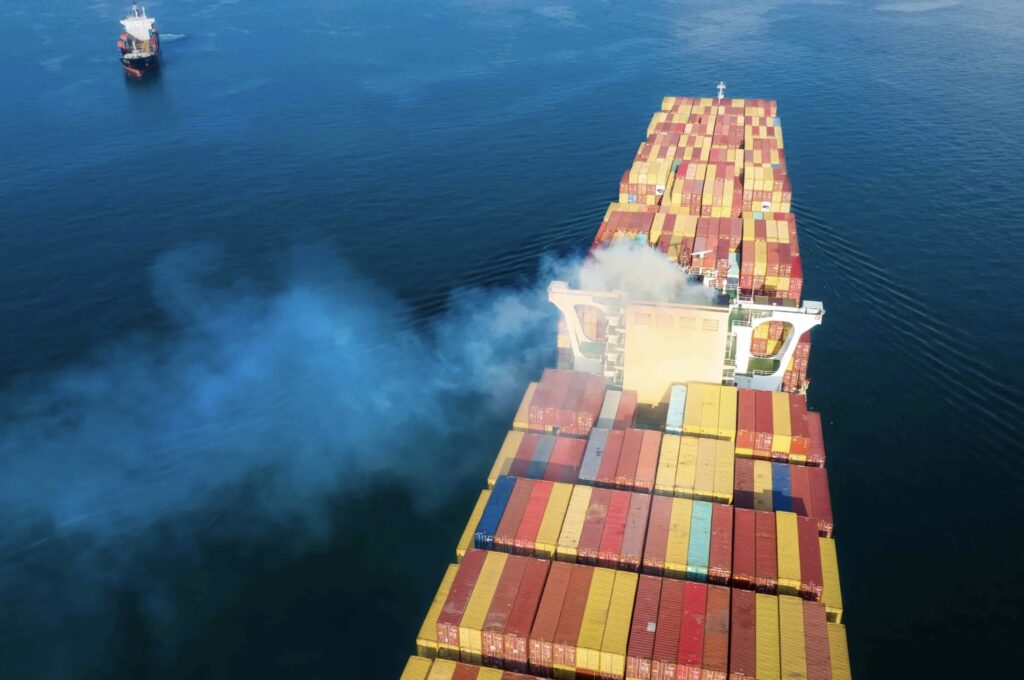The PCIP is promoted as a “green port” with claims of reducing truck traffic and plugging container ships into electric outlets whilst in port. There is nothing green about the container shipping industry.
Depending on how fast it travels each 13,000 TEU container ship uses roughly 70 to over 125 tonnes of fuel per day during the 12 – 16 sailing across the Pacific. The international shipping industry is responsible for ~3% of global CO2 emissions. Container ships contribute about 30% of these emissions.

Heavy fuel oil has been the main fuel source for container ships because it is inexpensive and energy-dense. However, its high sulfur content is a major source of pollution. While it is still a common fuel, the shipping industry is transitioning to cleaner alternatives like very-low-sulfur fuel and other green fuels to meet new global standards and reduce their environmental impact.
Several other harmful air pollutants are emitted by ships, including sulfur dioxide, black carbon, and nitrogen dioxide. Although many ships are fitted with “scrubbers” to reduce these pollutants the wash-water used to clean the scrubbers is often dumped overboard into the marine environment.
While in port container ships need a power source. Most container ships use a diesel generator to provide this power. Some ports are moving to supply cold ironing, meaning that ships can use a shore side electrical source. Cold ironing is slowly being implemented in west coast ports. However, a limited number of container ships are equipped to take advantage of this pollution reduction option. Only 40 of the over 900 container ships owned by the Mediterranean Shipping Company can be charged with shore electricity. California has legislation that at least half of all the container vessels coming to its ports must use shore-side power while berthed. Ships that do not have the ability to cold iron use alternative technologies, such as barge-based emissions capture systems. These attach to a docked vessel’s exhaust stack and pipe the emissions to the barge, where purification technology removes pollutants before they are released into the atmosphere.